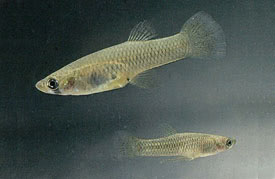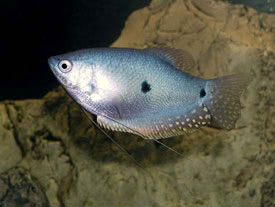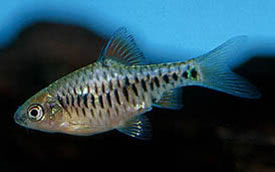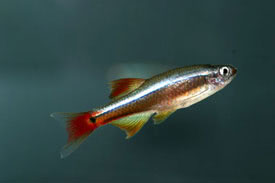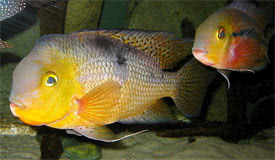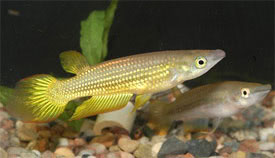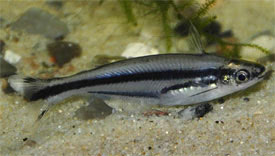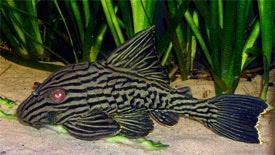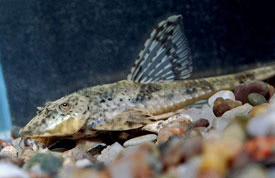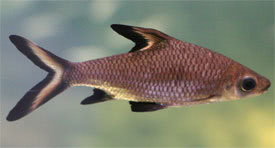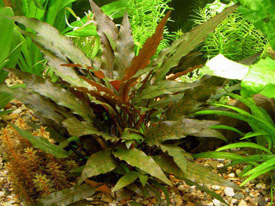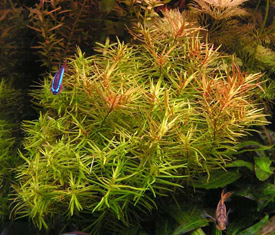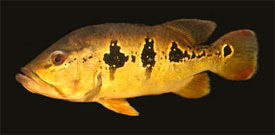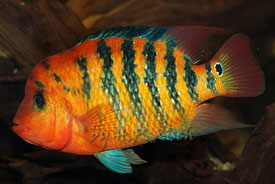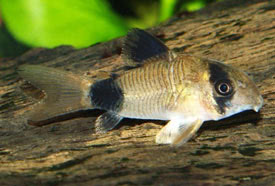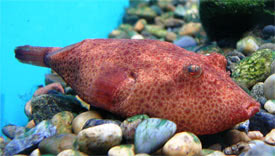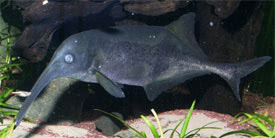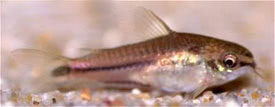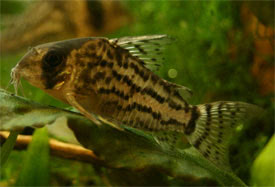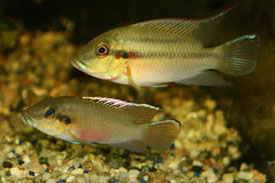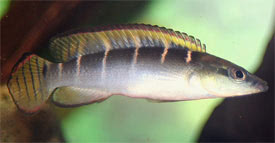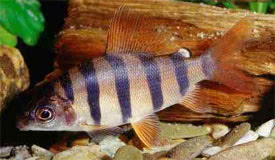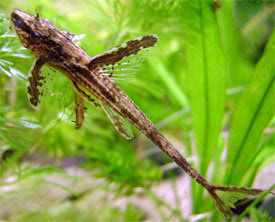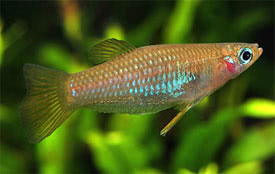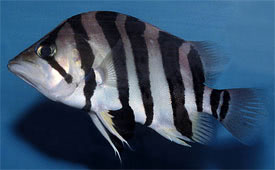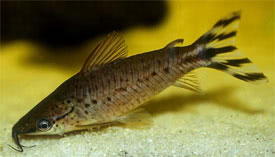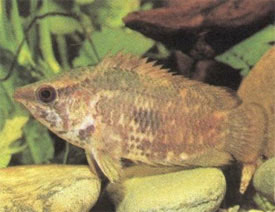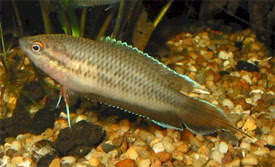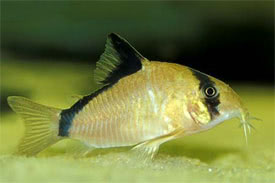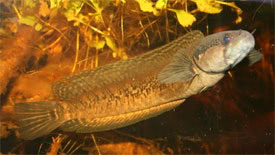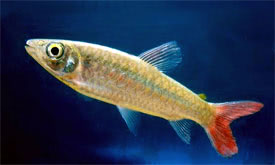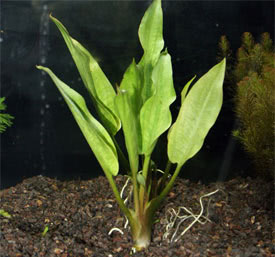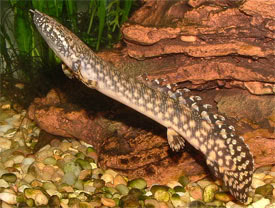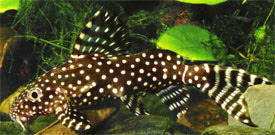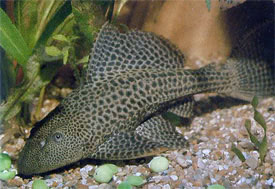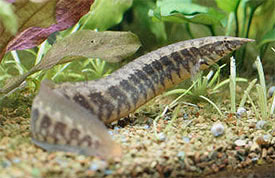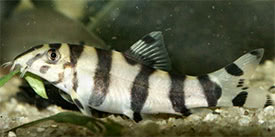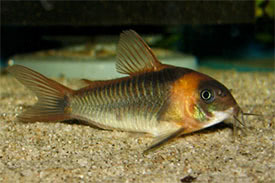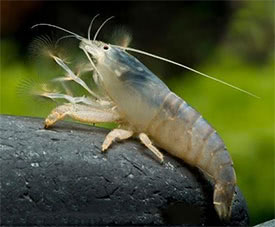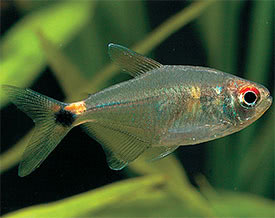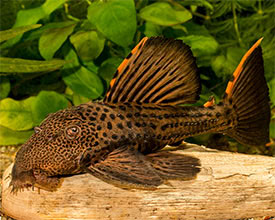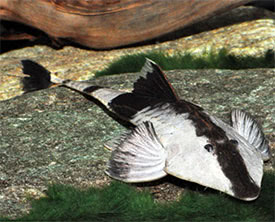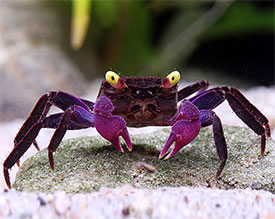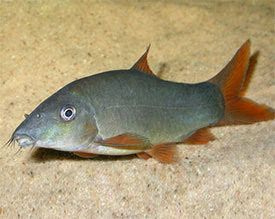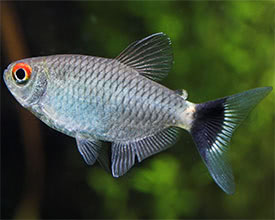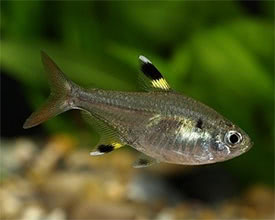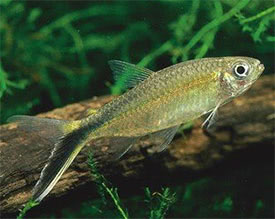
 Magyarul / Hungarian
Magyarul / Hungarian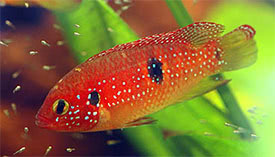
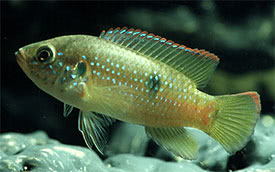
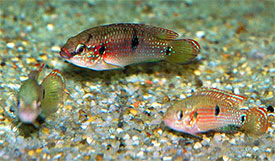
- Scientific name: Hemichromis bimaculatus
- Synonyms: Hemichromis cristatus
- Common name: Jewel Cichlid, Jewelfish
- Group: Cichlids
- Habitat: West Africa; from South Guinea to Central Liberia.
- Size: 12-15 cm
- Biotope: Inhabits in rivers and forest streams in Africa’s western coast.
- Social behavior: Territorial, and aggressive fish especially during spawning. They should be kept in a species tank in pairs. Do not keep with small, peaceful fish, as they may be killed.
- Diet: Omnivorous; Not a fussy eater, it will accept flake foods, but live foods will enhance the coloration of the fish. Provide some vegetable matter in its diet, such as spirulina or spinach.
- Breeding: Quite easy
- Tank: Minimum 100 litres
- Population: 1 pair for 100 litres.
- Decoration: They need a tank with dense vegetation, with plants that have very strong roots, such as Anubias or Vallisneria. Provide many hiding places through the use of clay flower pots, or cave-like hiding places among rocks and roots.
- Temperature: 22-28 °C
- pH: 6-7.8
- Hardness: 4-18 NK°
- Lifespan: 5-10 years
Description: Jewel Cichlid has a yellowish olive base coloration, with a darker green back. The body is covered with white spots. Its body turns to a brilliant red during breeding, and the white spots become brighter. The fins are pink or yellowish with blue or red linings. The gill cover is large and there is a black blotch on it. Hemichromis bimaculatus is often confused with its cousin Hemichromis lifalili. These species can be easily distinguished as H. lifalili have only 2 black spots on the flanks whereas H. bimaculatus has 3, having an extra spot on the caudal peduncle, and the Jewel Cichlid is also a little larger. Other differences that H. lifalili has a little different base color hue, and its body spots are whiter, while there are only a few spots on its fins.
A group of 5-6 young fish should be purchased and a pair allowed to form from those. However, even this may take some time. It is difficult to pair up adult Jewel Cichlids. Once a pair is seen to form, the other fish should be removed as they may be killed. The pair will remain together for life.
Breeding of Jewelfish is quite easy once they have established a pairing. During the spawning season, Hemichromis bimaculatus become even more aggressive, they will even attack the fingers of the fish keeper who will dare to put its hand in the tank. Before the spawning the fish usually rearrange the whole aquarium, often uproot the plants. They will choose a spawning site on a flat rock, the side of a flowerpot or even the aquarium glass and clean it thoroughly. As much as 200-500 pale yellow eggs can be released by one female. The eggs hatch in around 72 hours, and the parents move the fry into shallow pits, what the parents previously dig in the substrate around the spawning site. The fry become free-swimming after 8 days, and they develop quickly. Brood care by the parents usually continues for about a month, after which the fry should be removed as the parents may spawn again.





